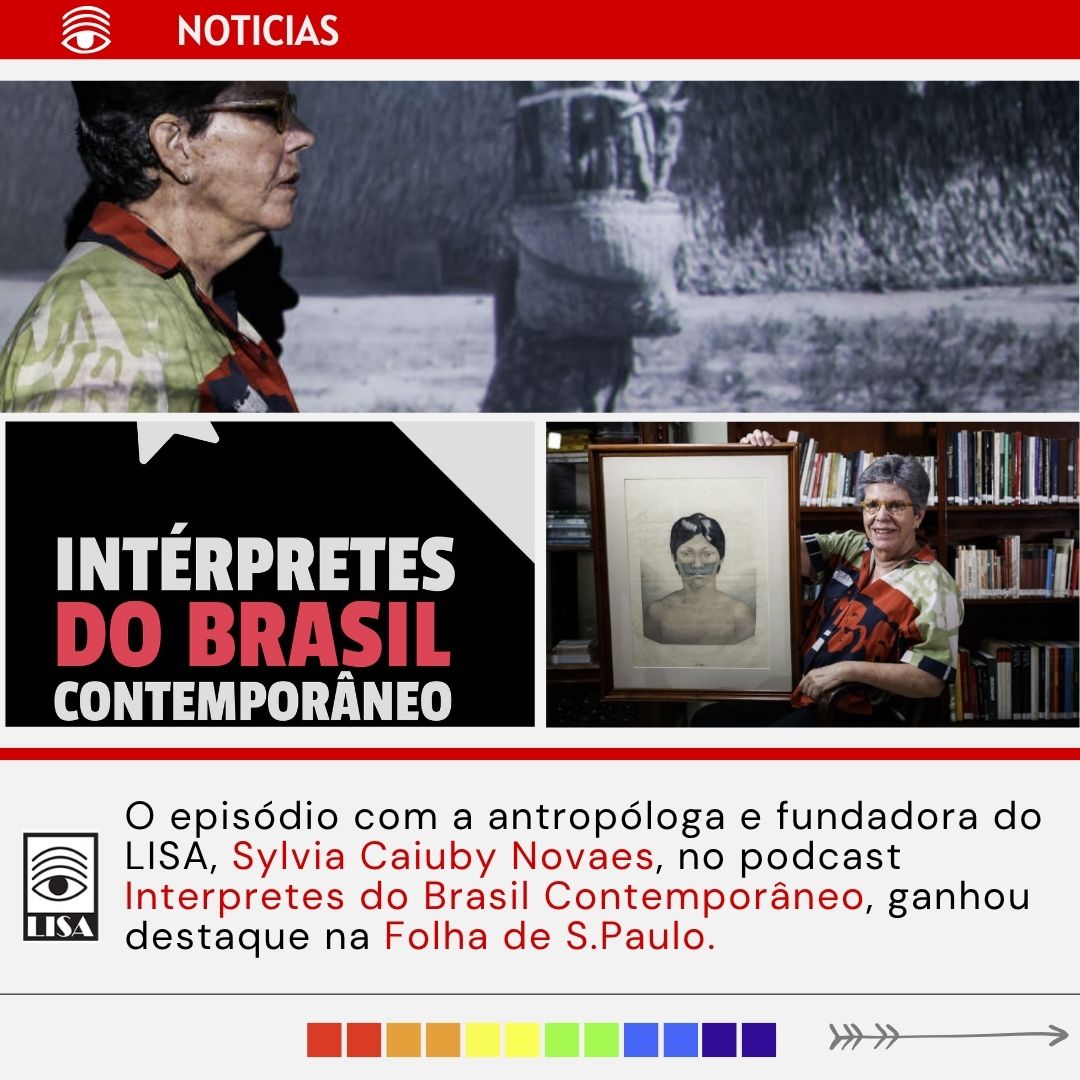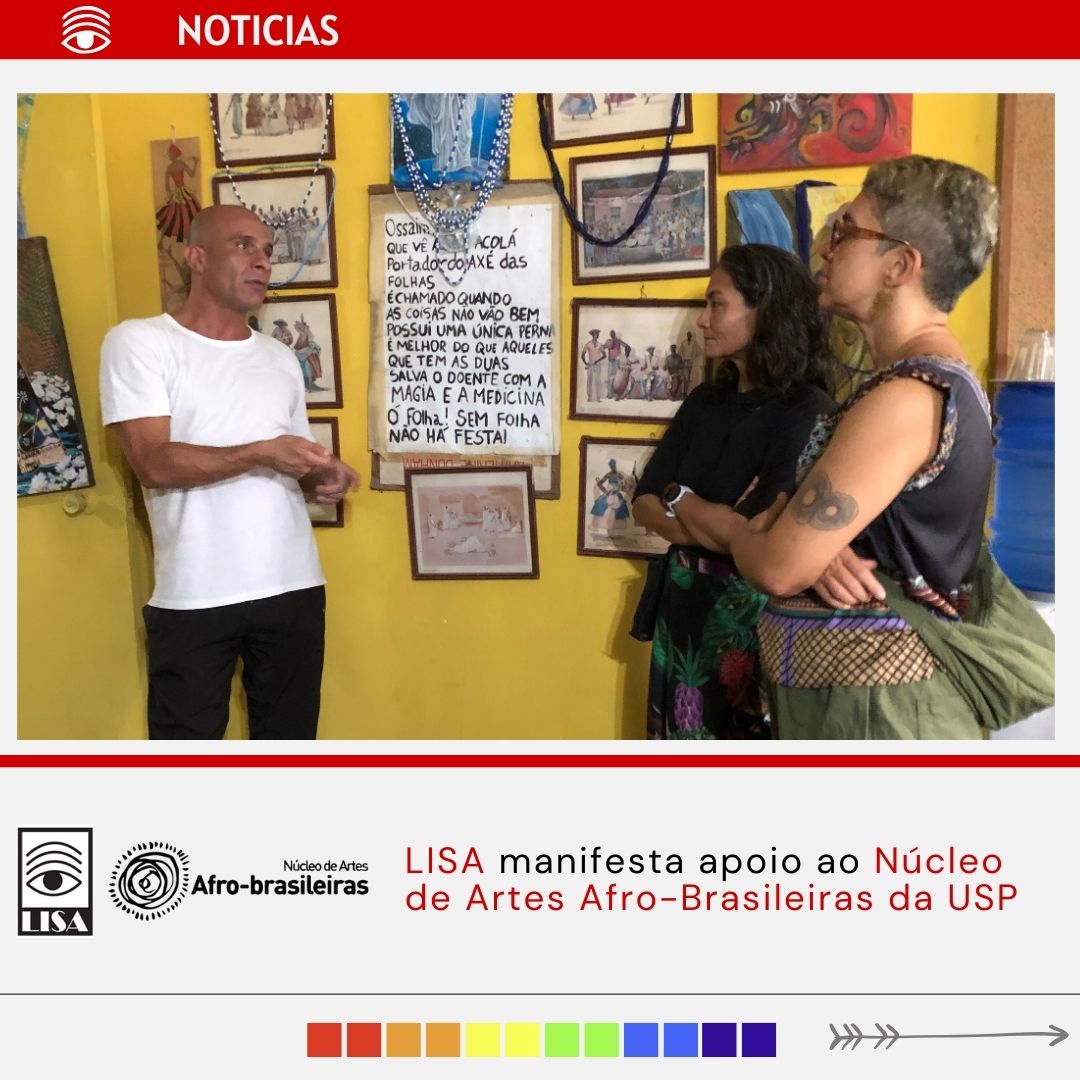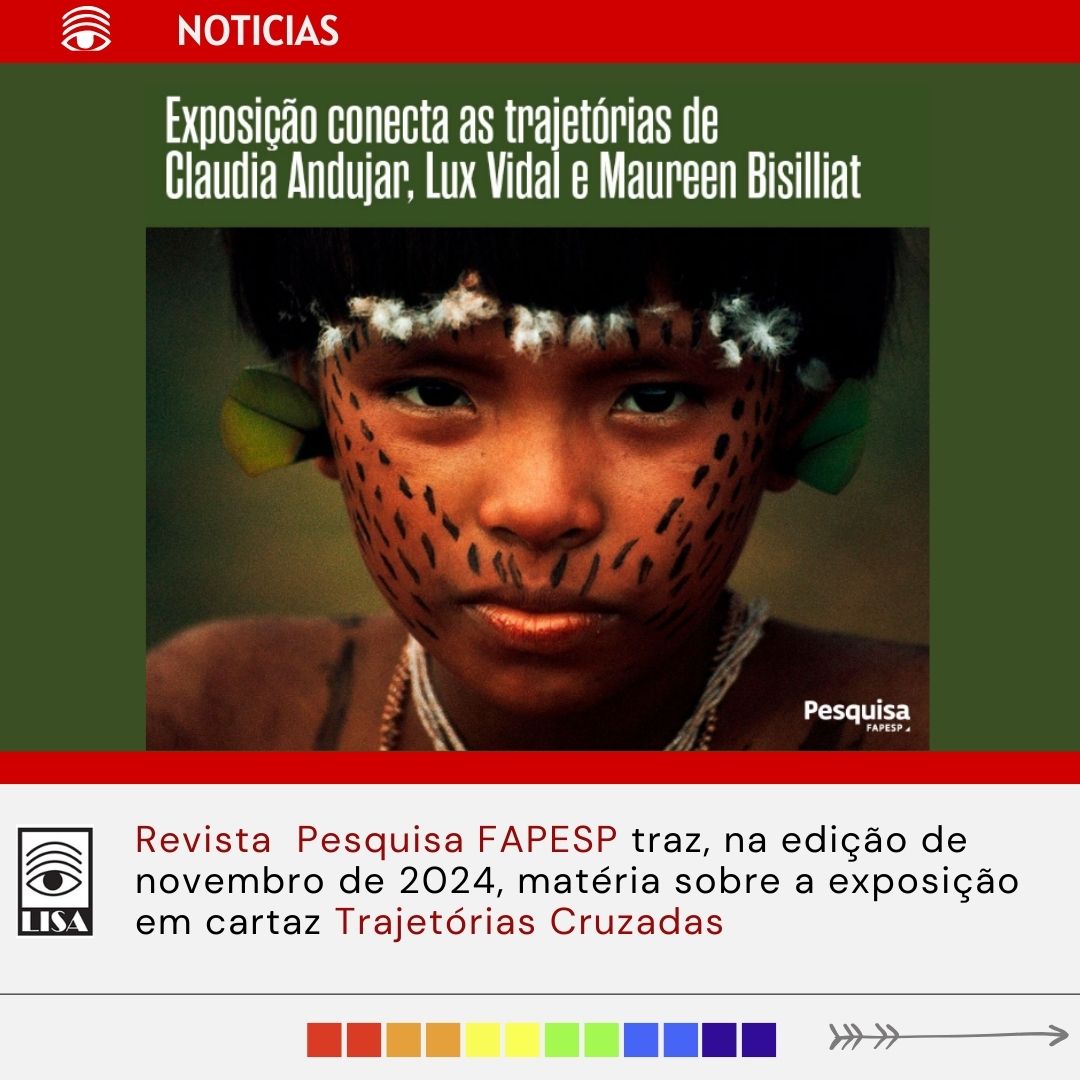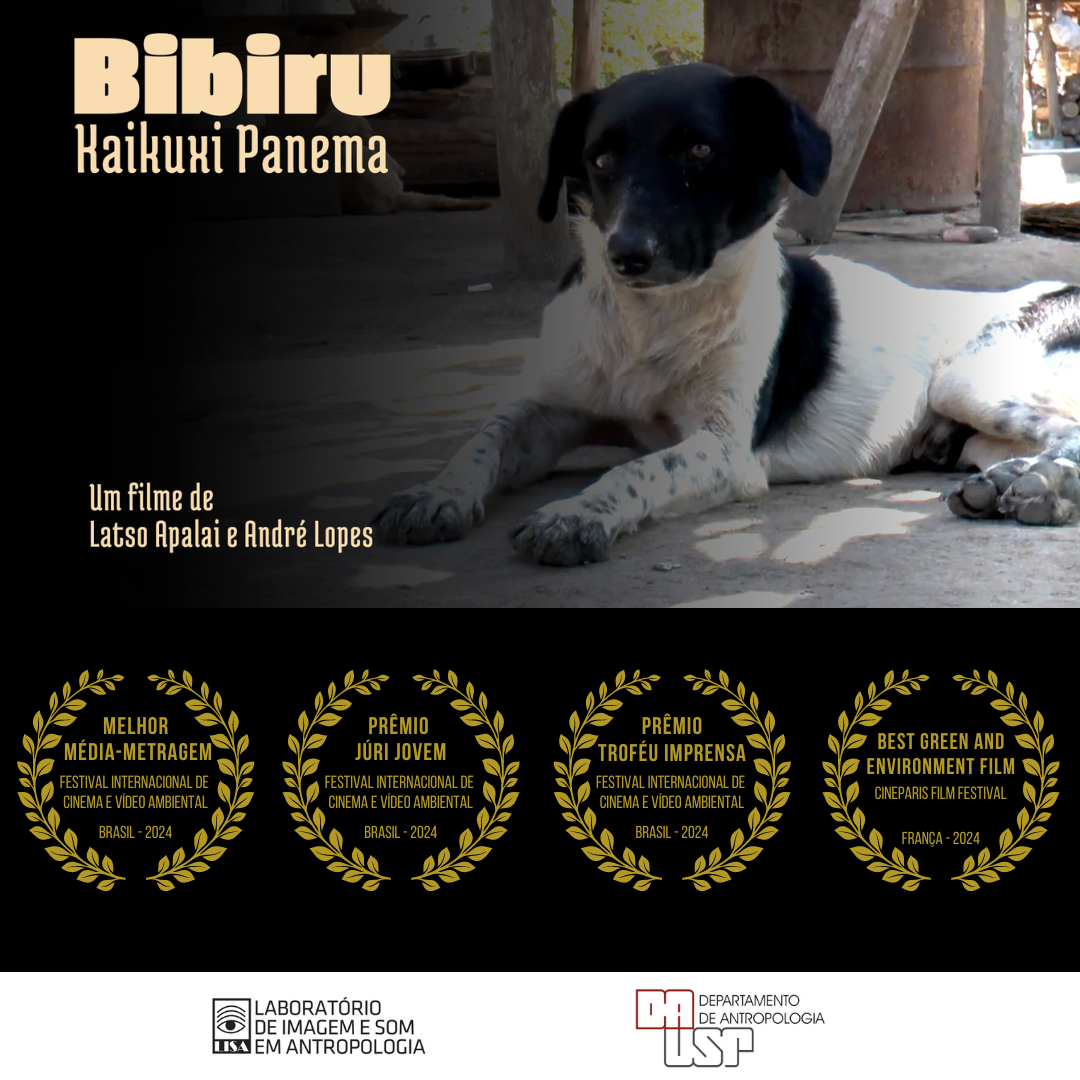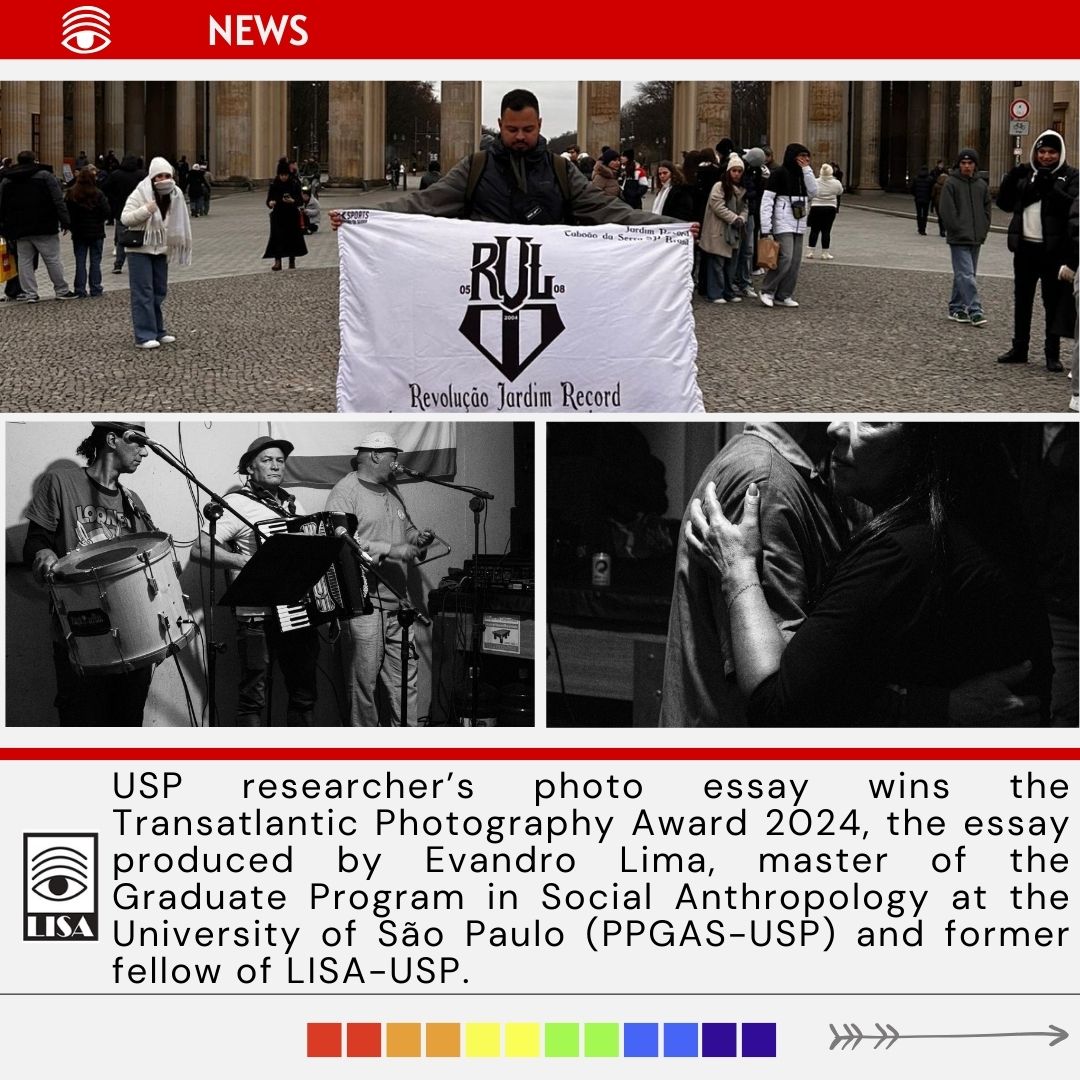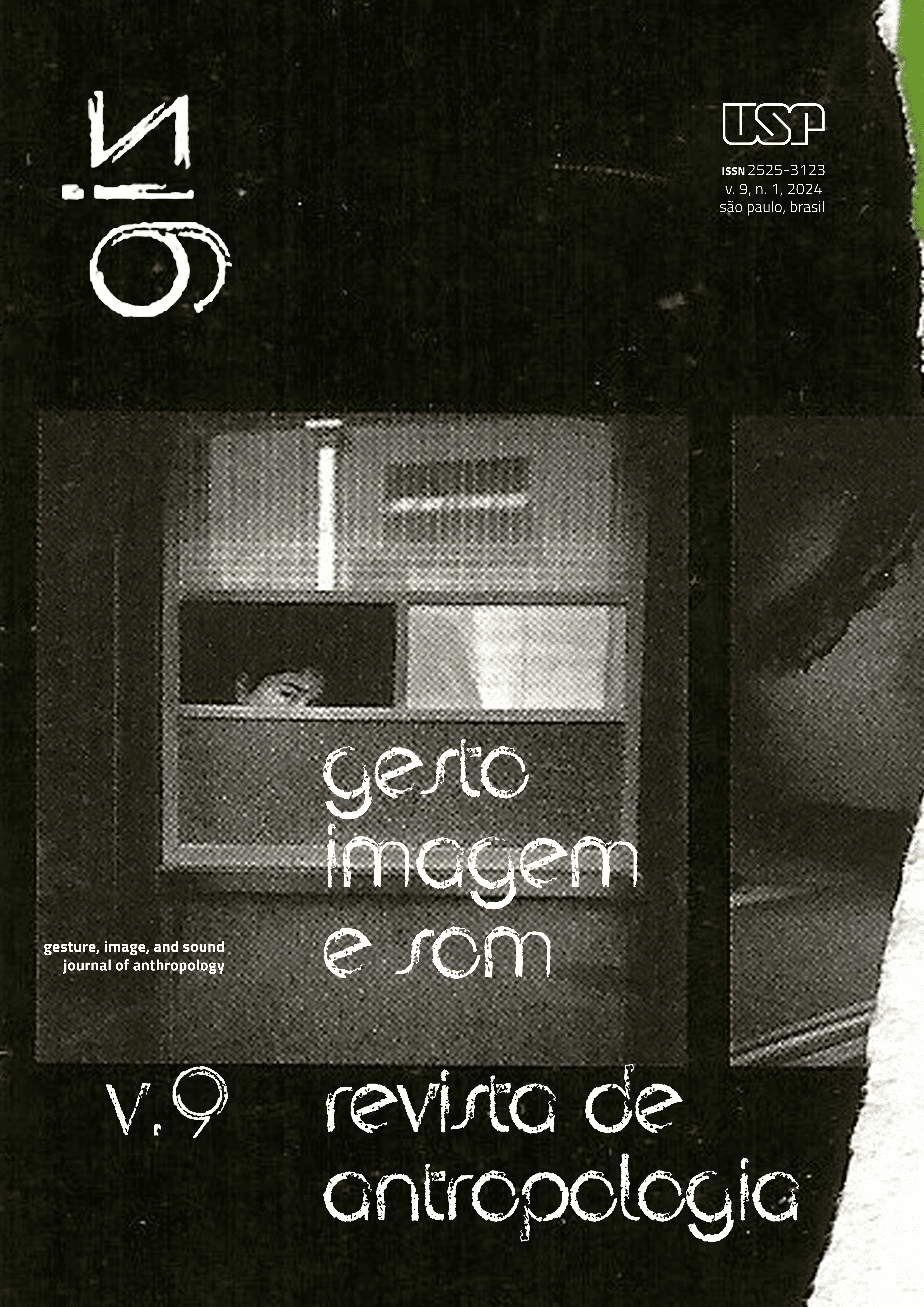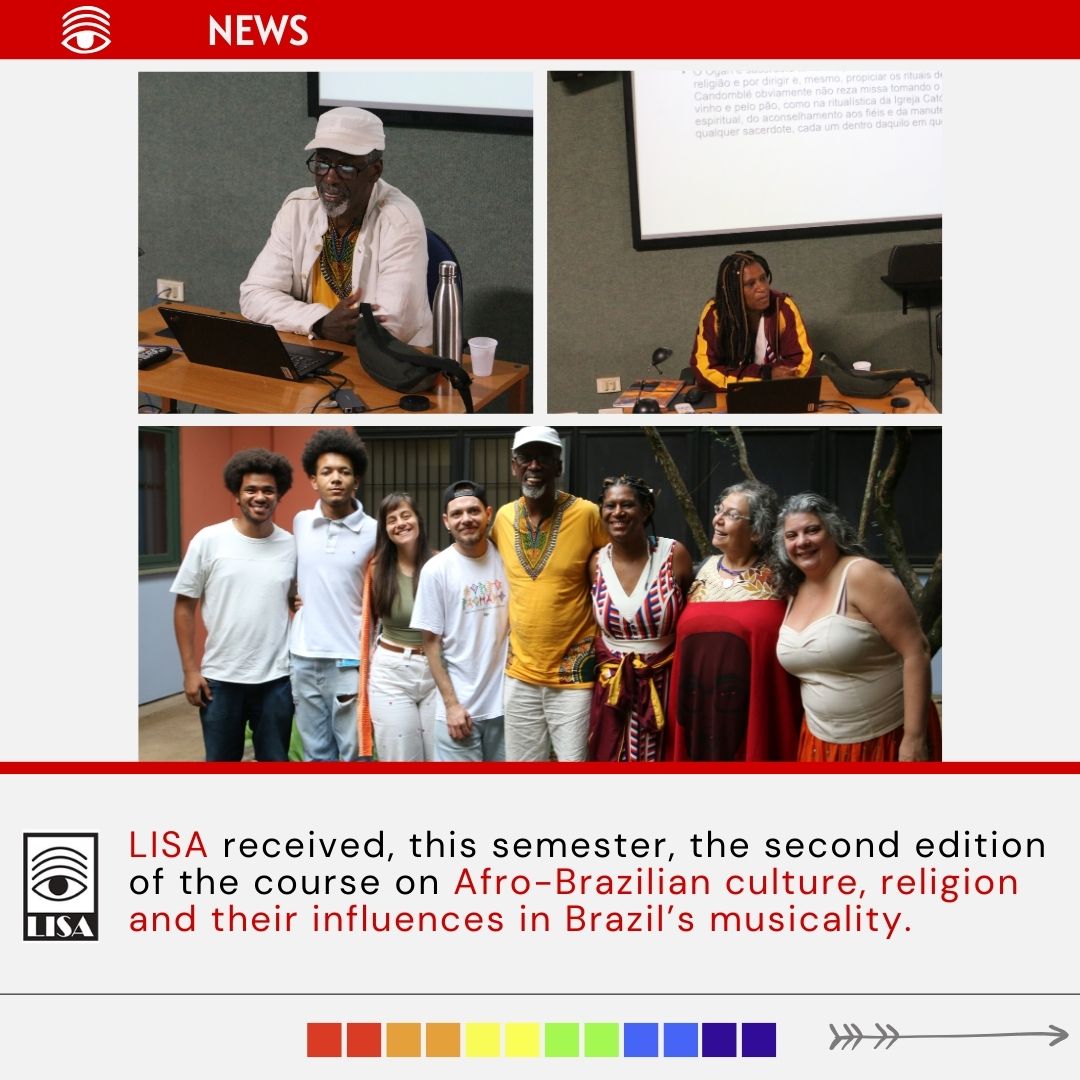News
The recording with anthropologist Sylvia Caiuby Novaes, on the podcast Intérpretes do Brasil Contemporâneo, was featured in Folha de S.Paulo!
In the article, Sylvia is recognized for her sensitivity and depth when talking about the role of the gaze in understanding images, a central theme of the conversation in the podcast.
With a career marked by listening, attention and visual criticism, Sylvia invites the public to reflect on how we see the world — especially in times of excess images and superficial readings.
🗞️ Check out the repercussion in Folha:
https://www1.folha.uol.com.br/ilustrissima/2025/05/antropologa-da-usp-destaca-sensibilidade-do-olhar-para-compreensao-de-imagens.shtml
🎧 Watch the full episode on Youtube:
…
The Laboratory of Image and Sound in Anthropology - LISA - held the workshop “Photographing and Seeing” from February 4 to 7, 2025. It was taught by researchers from the Visual Anthropology Group of the University of São Paulo (GRAVI-USP): Kelwin Marques, master's student in Social Anthropology at USP; Laila Kontic, master's student in Social Anthropology at USP; Kelly Koide, postdoctoral student at the Department of Anthropology at USP.
The meetings, held in person, sought to present technical concepts about a camera and its manual operation, practical exercises, discussions about photography and visual anthropology, in addition to a visit to the exhibition “Trajetórias Cruzadas: Claudia Andujar, Lux Vidal and Maureen Bisilliat”, held at the MariaAntonia Center of the University of São Paulo. The workshop was part of a series of activities for the exhibition “Trajetórias Cruzadas…
The Image and Sound Laboratory in Anthropology of the University of São Paulo (LISA-USP) recognizes the importance of the activities developed by the Center for Extension and Culture in Afro-Brazilian Arts of USP (NECAAB - Resolution DOE 10/31/2007), which has been promoting research, teaching, culture and extension activities at USP for 28 years and enriching university education through Afro-Brazilian cultural heritage. Its activities present an innovative curricular proposal for the university, which should be valued and enhanced through dialogue with the members of NECAAB and the university community as a whole. To this end, the continuity of its activities and its space is essential.
Given the imposition of a renovation of the headquarters of the Center for Afro-Brazilian Arts, located in Block 28, by the Polytechnic School of USP, for partial occupation of the warehouse by this institution…
Exhibition connects the trajectories of Claudia Andujar, Lux Vidal and Maureen Bisilliat
Now in their nonagenarians, they settled in Brazil in the 1950s and produced a vast photographic collection on indigenous themes.
In 2015, anthropologist Sylvia Caiuby Novaes was leaving the cinema when a scene caught her attention. She saw photographers Claudia Andujar and Maureen Bisilliat and anthropologist Lux Vidal walking together down Augusta Street in São Paulo, arms intertwined. “This image inspired me to investigate the affinities between those three women,” recalls Caiuby Novaes, a professor in the Department of Anthropology at the University of São Paulo (USP).
The idea gave rise to the research project “Photographs and trajectories: Claudia Andujar, Lux Vidal and Maureen Bisilliat”, coordinated by Caiuby Novaes, with support from FAPESP, between 2019 and 2022, which resulted in a website and…
The ethnographic film "Bibiru: Kaikuxi Panema" won four international awards in the first half of 2024. At the 25th International Environmental Film and Video Festival - FICA, the documentary won in the following categories: Acari Passos Award for Best Medium-Length, José Petrillo Press Trophy and Jesco Von Putkammer Award, from the Young Jury. The festival took place in the city of Goiás during the month of June and received more than a thousand entries of different film genres, which were connected to environmental themes. It was also elected in the Best Green and Environment Film category by the jury of the Cineparis Film Festival, which brought together artists and filmmakers in Paris in June focused on discovering new talents and works. In July, the film was nominated for the XV Pierre Verger Film Award, promoted by the Brazilian Anthropology Association, one of the main competitive festivals of works produced within the scope of anthropological research in Latin America.…
Evandro Lima, master of the Post-Graduate Program in Social Anthropology at the University of São Paulo (PPGAS-USP) and former fellow of the Laboratory of Image and Sound in Anthropology (LISA-USP), was awarded in 2024 with the Transatlantic Photography Award 2024. The award consisted of a trip and activities at the LetteVerein School in Berlin. The award-winning photo shoot was held during the Festa dos Nordestinos do Jardim Record, an action of the collective Árido 2 de Julho, held in Taboão da Serra, metropolitan region of São Paulo.
For Evandro, the award represents the validation of his work. Son of northeastern parents, he considers that the images produced during the event, in addition to contributing to his training as an anthropologist, also help preserve the image and culture of immigrant populations. During his stay in the German capital, the researcher attended workshops, visits to sights, exhibitions, museums and art galleries. In addition to…
Award-winning thesis follows the cinema of the Manoki and Myky indigenous peoples
An anthropologist who offers audiovisual workshops in villages in Mato Grosso analyzed films on themes such as traditional games and rituals and the relationships between humans and non-humans
Through audiovisual language, the Manoki and Myky indigenous peoples found a way to share their practices and stories. The engagement of young people with audiovisual led to the reactivation of traditions of these peoples, who live in Mato Grosso, the creation of a film collective and the production of some award-winning films. It was from researcher André Lopes' contact and relationship with this process that the doctoral thesis Ijã Mytyli: The Manoki and the Mỹky in their new paths - audiovisual stories was born, winner of the USP 2024 Outstanding Thesis Award in the Innovation category.
A graduate in Social Sciences, André Lopes has been working with the Manoki in the state of Mato…
The ninth volume of GIS - Gesture, Image, and Sound - Journal of Anthropology of the University of São Paulo is now available.
We invite you to visit the GIS website and read the articles, essays, reviews, translations and interviews published in this volume, available at: https://www.revistas.usp.br/gis/issue/view/13258.
Enjoy your reading!
Website: www.revistas.usp.br/gis
Folha de São Paulo highlighted the exhibition "Trajetórias Cruzadas", which brings together, for the first time, the records of photographers Maureen Bisilliat, Claudia Andujar and Lux Vidal about Brazilian indigenous peoples.
These three foreigners arrived in Brazil in the 1950s and, during the dictatorship, dedicated their lenses and research to portraying indigenous cultures ignored by the government. Bisilliat, who photographed the Xingu at the invitation of indigenous people, summarizes her approach: “My talent was to enter without disturbing and be accepted. If I was good at photography, it’s because I knew how to enter something new without being noticed.”
In the BBC article, the highlight is Claudia Andujar, the article mentions both the exhibition “Trajetórias Cruzadas” and “Claudia Andujar - My life in two worlds”, exhibited at the Pinacoteca of São Paulo.
"They are polyglots, they never lost their accent, but they don't exactly have a…
The way of Alabê - Rhythms of the orixás and the Brazilian music" taught by Vitor da Trindade and Elis Trindade
The second edition of the course on culture and university extension entitled The way of Alabê - Rhythms of the orixás and Brazilian music, promoted and held at the Sound and Image Laboratory in Anthropology (LISA) and at the Popular Theatre Solano Trindade (TPST), with support from the Department of Anthropology at USP. The course was coordinated by Rose Satiko Gitirana Hikiji, professor at USP’s Department of Anthropology (DA-USP) and coordinator of LISA, and taught by Vitor Israel Trindade de Souza, musician, master in ethnomusicology from the School of Communications and Arts (ECA) of USP, president and artistic director of Teatro Popular Solano Trindade, and by Elis Sibere dos Santos Monte Trindade de Souza, Afro-Brazilian dance teacher, choreographer and cultural coordinator of Teatro Popular Solano Trindade.
The activities took place…



